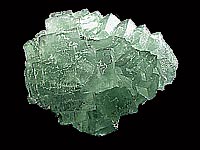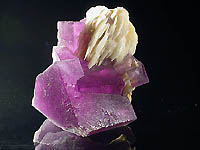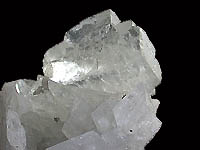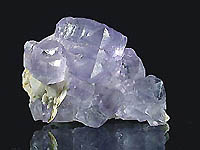
What about fluorite?
The
book "Valzergues fluorite mine"
![]() E.
Guillou-Gotkovsky
E.
Guillou-Gotkovsky
![]() Comments
Comments
![]() How
to get the book
How
to get the book
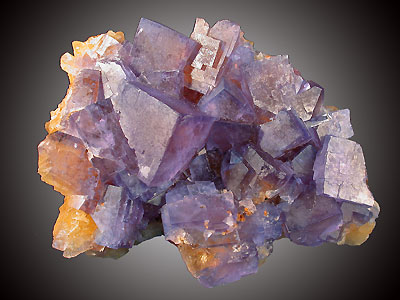
Yellow-blue
s pecimen - Yellow vein - Valzergues fluorite mine
Collection Gilles Emringer.
| Fluorite is the most important natural fluoride. It can be found in many veins that are often associated to granitic rocks. Due to its richness and its colors, the fluorite has always been fascinating for the man. This mineral received several names (Spatum vitreum, Calx fluorata...) before being called fluorite. The commercial and industrial word is fluorspar (spathfluor in French...) Its crystallographic structure, very simple, was determined by William H. Bragg. This was done by x-rays diffraction. | 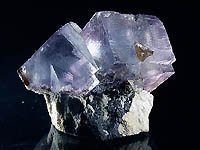 Blue Fluorite - Cave-in-Rock - USA |
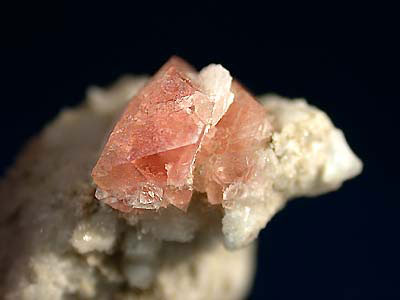 |
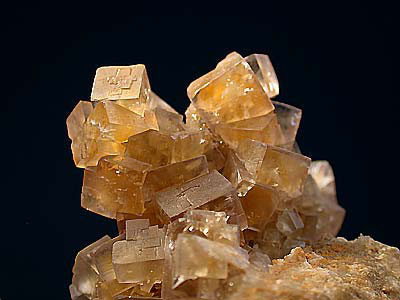 |
| Fluorite
octahedrons on calcite Mont-Blanc | Cluster
of yellow fluorite cubes, disposed like a stalactite Valzergues - Yellow Vein |
Chemical
class : HALIDES
Crystalline
system : CUBIC
Etymology : from Latin « fluere »= to flow - use in metallurgy.
Morphology : cubical, octahedral...
Color : from colorless to all colors.
Hardness : 4 (Mohs scale)
Index
of refraction : n = 1.434
Average density = 3.13
Melting
point : 1360 °C
Transparency : all optical qualities are found (from
gem to stone).
Fluorescence : UV (long and short waves).
Solubility
: in various acids, and aqueous solutions.
Pseudomorphosis
: often quartz.
Use : mainly in metallurgy and chemical industries.
Gitology
: formation at low temperature. Especially often found in France.
Fluorite deposits:
-in the form of the principal mineral (see page "Mines
of fluorite")
-in the form of a secondary mineral (see page "Other
mines")
Valzergues mine is a typical exemple of hydrothermal veins.
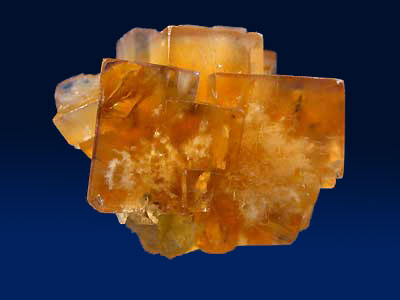 |
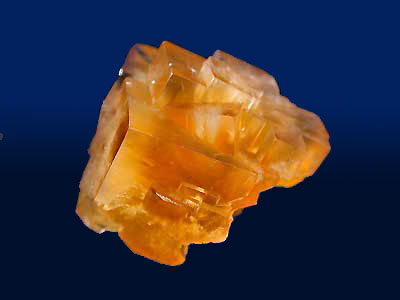 |
A nice specimen from the Yellow Vein (two sides).The color is very interesting (honey-amber)
The
major part of crystallisations is cubic. Parallelepipedic crystals are less often
found.
Octahedral shapes appear when the temperature in which crystallisation
can occur is higher.
At last, the fluorite can be in the form of spheres like
crystallisations coming from Mahodarry (India)…
Many intermediate shapes can also exist.(hexaoctahedron, tetra hexahedron…etc).
The size of the crystals can reach impressive dimensions and weight (A 100 kg single crystal was collected in the Valzergues mine - see book page 157)
Twins can also be found (« Cumberland » twins). Epitaxies and pseudomorphosis appear in some mines.
|
El Hammam - Morocco |
Berbes - Spain |
Mina Emilio - Spain |
Caravia - Spain |
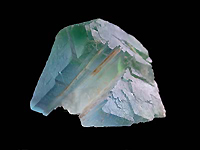 |
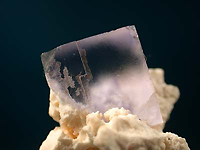 |
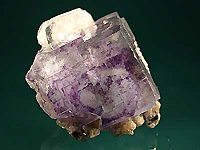 |
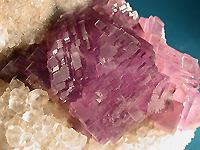 |
| Argbla
- Morocco | Argbla
- Morocco | China |
Spain |
The colouring is due to the presence of various compounds in the crystal :they can be ions (yttrium, europium…).
The most widespread colors are :
-
violet, light purple to dark purple (Berbès …)
- blue (Beix, Burg…)
-
pink (Mont-Blanc…)
- yellow (Valzergues)
- green (La Barre…)
Crystallisations can also have an association of colors (for instance : Valzergues
where yellow fluorites have a blue-purple edging).
Heating and light tend to make the colour of the crystals disappear. Consequently, it is recommended to store the samples in darkness.
The notoriety of Valzergues fluorite comes from the rarety of its color.
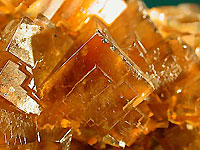 |
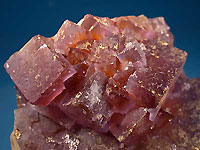 |
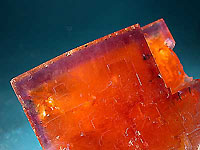 |
| Amber, purple and deep yellow with blue edge... Specimens from the "yellow vein" - Valzergues - Aveyron - France | ||
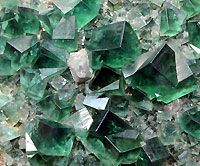 |
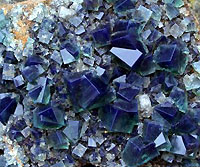 |
| The
Rogerley fluorite is world-known for its dichroism. Left : artificial lighting Right : Natural ligh Photos Jesse Fischer - private coll.. | |
| The use of fluorite as an industrial mineral is recent. Until the half of the XIX century, its interest was mainly ornamental. Then, it became industrial in the 1980s. The industrial growth goes back to 1860-1880. Currently, the fluorite is mainly used in the following fields: Chemical
industries (manufacturing of hydrofluoric acid, thermic fluids…) …and in fields of less economic importance. Industries
of glass and ceramics Valzergues fluorite was primaly used in iron and steel industries, in various factories located anywhere in France. It was exported to the United States, too. |
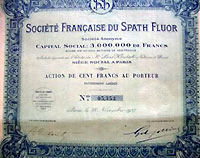 One of the industrials... |
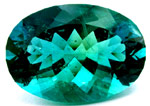 |
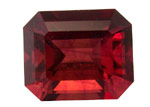 |
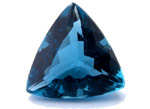 | ||
| Fluorites
offered by ©Gemfrance.com | ||||
Fluorite pictures on Spathfluorminerals & MultiAxes
